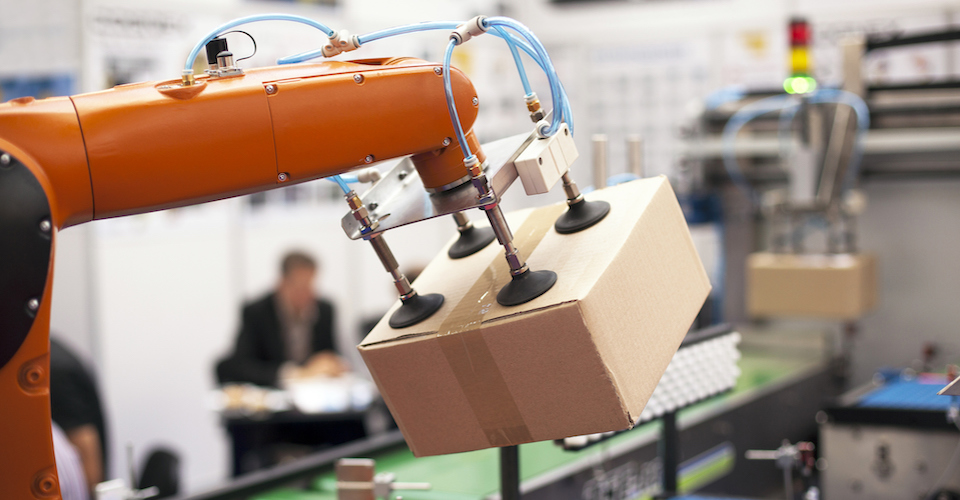
 Go to homepage
Go to homepage
To see the impact that disruptive innovations are having on the global and national supply chain, you only need to glance at the daily headlines. In the past month alone, we’ve seen:
“Volvo shows off self-driving, electric truck with no cab” (Reuters, 9/12/18)
“J.B. Hunt Says 10% Raises Are the Antidote to the Truck-Driver Shortage” (Bloomberg, 10/16/18)
“Amazon to Raise Minimum Wage to $15 for All U.S. Workers” (New York Times, 10/2/18)
Those headlines, and scores more, merely confirm what Forbes Insights and Penske found in a recent industry survey: that “tectonic shifts” are occurring in logistics, supply chain, and transportation across all major industries.
Their report, Logistics, Supply Chain And Transportation 2023: Change At Breakneck Speed, found that 65 percent of executives surveyed recognize that huge, disruptive changes are taking place. And 62 percent say their own companies are already undergoing profound transformation as a result of those changes.
The survey of 433 senior industry and functional executives in logistics, supply chain, and transportation found that these tectonic shifts are being driven by four fundamental forces:
Technology advances, especially in the Internet of Things (IoT), telematics (which combines telecommunications and informatics), artificial intelligence (AI) and machine learning, and blockchain, among others.
Yet, even with the current disruptions, two-thirds of the executives are optimistic that productivity will increase as a result of the new technologies.
And so will collaboration, according to the report: “The industry is heading toward unprecedented levels of cooperation and outreach as participants expand collaboration with suppliers, customers, partners and others playing key roles across the logistics, supply chain, and transportation value chain.”

It is in that spirit of collaboration that the Center for Supply Chain Research at Lehigh will host its 2018 Fall Forum on “Disruptive Innovations in the Supply Chain” on Nov. 8-9, 2018. The forum, planned months before the Forbes Insights report came out in September, will feature leading industry and academic experts who will share their insights not only on the disruptive innovations affecting the supply chain today, but also on how to succeed in dealing with them.
For example, as unemployment drops to historic lows, companies are now competing feverishly for good people. Amazon’s decision to raise its minimum wage for all workers to $15-an-hour is a game-changer, one sure to reverberate throughout the retail world.
And yet, Amazon warehouses are increasingly automated, with robotic pickers now doing work once done by humans. Meanwhile, Sears—the most disruptive force in the retail world a century ago—is in bankruptcy, and likely facing liquidation. You can see these conflicting trends in industry after industry.
It was only a few months ago that experts were predicting doom and gloom over the new law requiring truck drivers to use electronic driver logs. For years, truck drivers have been limited under the law to driving no more than 11 hours during any 14-hour period. However some smaller owner-operator truck drivers have been known to simply keep two logs: one to show the police if they got stopped, and one they turned in to get paid.
With the legal requirement to use electronic driver logs, there’s no more fudging. Many predicted the law would lead to an even greater shortage of truck drivers, especially owner-operators. While it’s true that a few people stopped driving as a result of the change, it certainly hasn’t been the death knell so many people predicted.
In fact, the trucking industry is booming along with the economy. The increased demand for trucking services to move goods, however, has to contend with a shortage of truck drivers. Long-haul truck driving is a tough life, requiring drivers to work long hours and be away from home frequently. With ample other employment opportunities opening up, it’s harder to attract enough truckers to move the freight.
So on the one hand, you have JB Hunt Transport Services, a Fortune 500 company and one of the largest transportation logistics companies in North America, raising wages by around 10 percent over the past year-and-a-half to recruit new drivers.
And on the other hand, you have Volvo—the world’s second largest truck maker—unveiling a self-driving, electric truck that doesn’t even have a driver’s cab.
How will this all play out?
I don’t have a crystal ball.
But on Nov. 8-9, we will have experts on topics ranging from less than truckload (LTL) shipping to robotic picking to maritime supply chains to machine learning to electronic driver logs to advertising strategies to automation providers and much more on campus to talk about the present and future of supply chain management as it deals with all of these disruptive innovations.